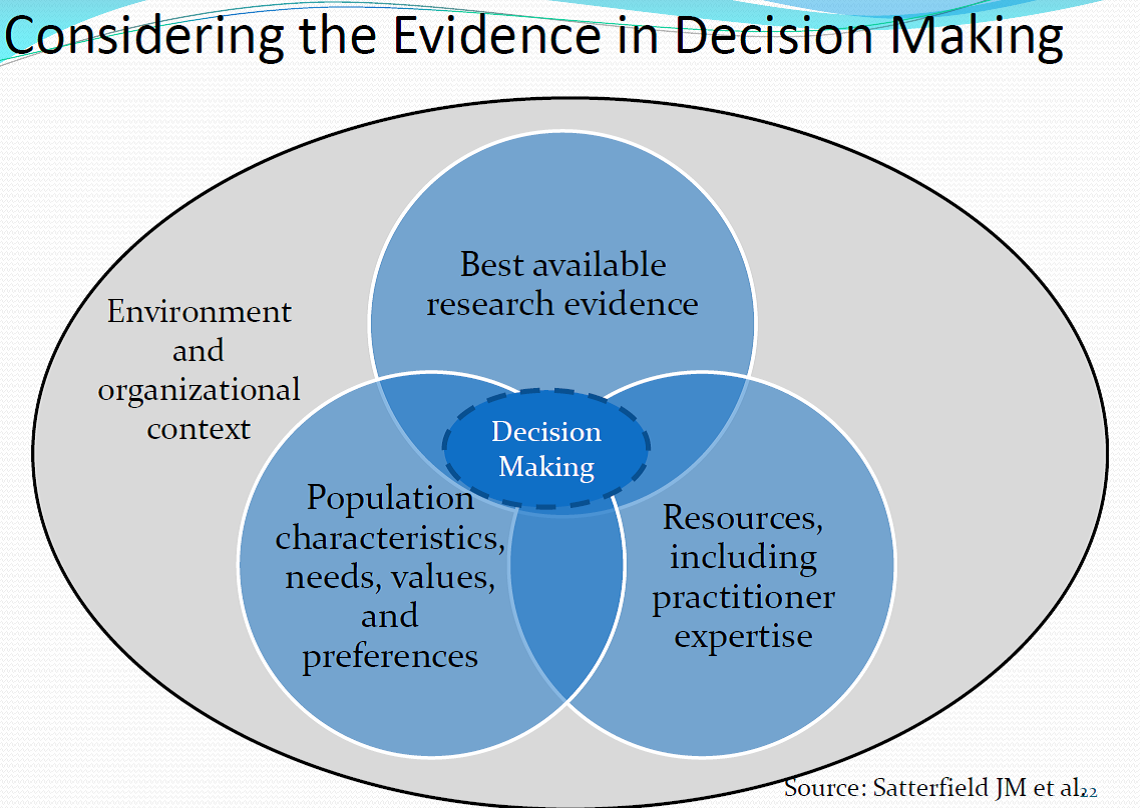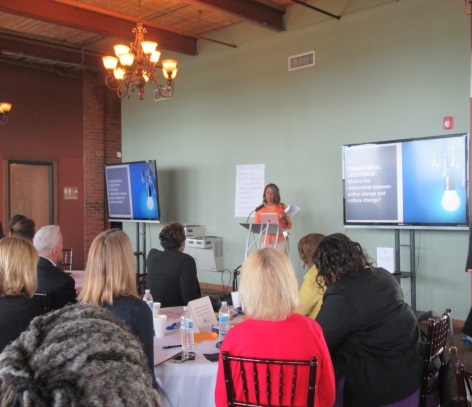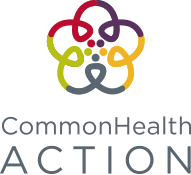Get Involved as a
Policy Maker
One of our key approaches is health and equity in all policies. Years of public policy and private actions
have created opportunity for some, while oppressing others. We must transform our approach to policy and decision making to create conditions for ALL Cuyahoga County residents to be healthy.
“Policy decisions often reflect our values as a society – what we collectively judge to be important. Understanding what we individually and collectively value can help us to advance policy change more strategically and effectively.” ~Natalie S. Burke, President and CEO, CommonHealth ACTION
How to Get Involved
Your Help Is Needed
Decisions our community makes every day impact health, and those decisions can serve as barriers that make it harder for some people to live healthy lives. HIP-Cuyahoga is committed to working collectively from the grassroots to key decision maker levels to inform and shape systems, policies, and practices to improve the health and well-being of all in Cuyahoga County.
As policy and decision makers you can help us advance our quest for improved health and equity by working with HIP-Cuyahoga to identify opportunities to align interests, capacity, values, partnerships, and resources, around policy action areas. By working collectively on policy areas such as access to healthy food, housing, education, transportation, and community safety, we can ensure that everyone benefits from the policies and practices within our county, our communities, and our organizations.
In an effort to move hearts, minds, and policy in the same direction HIP-Cuyahoga takes a Head and Heart Approach to our work.
 Through the Head approach we consider and evaluate the evidence needed to implement effective programs and policies. We recognize the importance of having a reliable and clear picture of where our worst health outcomes are in the county and what factors contribute to or reduce opportunities to be healthy. For example, based on our data, we know that race and place matter for health because people of color, especially those with the lowest incomes living in the urban core, have some of the worst health outcomes of anyone in Cuyahoga County.
Through the Head approach we consider and evaluate the evidence needed to implement effective programs and policies. We recognize the importance of having a reliable and clear picture of where our worst health outcomes are in the county and what factors contribute to or reduce opportunities to be healthy. For example, based on our data, we know that race and place matter for health because people of color, especially those with the lowest incomes living in the urban core, have some of the worst health outcomes of anyone in Cuyahoga County.
- Through the Heart approach we consider why our data matters. We consider who benefits and who is burdened by the conditions and circumstances that our community members are living, working, learning and playing in. Recognizing that differences in opportunities to be healthy are unfair and unjust, we seek to shape healthier and more equitable communities.
We Need Equity in All Policy
What is the problem & why it matters
There are major opportunity costs for poor health. Years of public policy and private actions have created opportunity for some, while oppressing others. These opportunity gaps have created living conditions that are unsafe, unhealthy and unacceptable for many under resourced communities and communities of color.
The inequities that lead to poor health are bad for everyone, not just those who are sick or live in those neighborhoods. The health of a community is not limited to an individual’s health circumstances and status. Poor health and health care threatens local, regional, state and national economies. Health can no longer be relegated to social science or political discussions. Health and its culture have become as much an issue of economics as all other recognized factors that drive an economy’s vitality such as education, productivity and a skilled workforce.
We believe that health should not be viewed as something scarce or something that must be rationed or fought over. Instead, we view health as a resource that multiplies the more it is shared. Health is abundant. By improving health for those in need, we will generate better health for everyone who lives and works in Cuyahoga County.
Related Resources
Making Public Policy Collective Impact Friendly
The Centers for Disease Control and Prevention’s Policy Analytical Framework
Adelaide Statement on Health in All Policies – World Health Organization
Beyond Medical Care – Emerging Policy Opportunities to Advance Prevention and Improve Health Value in Ohio – HPIO
Beyond Medical Care – The Health and Equity in All Policies Approach to Decision Making fact sheet
Health in All Policies – A Guide for State and Local Governments – American Public Health Association
Health in All Policies Infographic – World Health Organization
Health In All Policies – Model Policies from ChangeLab Solutions
Health in All Policies Training Manual – World Health Organization
Health in All Policies General Plan – ChangeLab Solutions
Model Health in All Policies Ordinance – ChangeLab Solutions
Model Health in All Policies Resolution – ChangeLab Solutions
HIP-Cuyahoga in Action
Recent Policy Activities
On September 20, 2017, HIP-Cuyahoga hosted a roundtable discussion which brought together key policy leaders – local and regional elected officials, as well as executives of organizations that conduct policy research and advocacy, provide quality services, and create economic opportunities in Cuyahoga County.

The discussion for the roundtable was facilitated by experts from CommonHealth ACTION, a national public health organization from Washington DC. CommonHealth ACTION is a national organization that develops leaders and organizations to produce health through equitable policies, programs, and practices.
Together, with members of HIP-Cuyahoga’s Steering Committee, 24 invited policy leaders explored opportunities to align interests, capacity, values, partnerships, and resources, around policy action areas that can foster sustainable community change.
Participants completed a Pre-Roundtable survey to gather information on personal and professional values, priorities in decision-making, and ways that equity and structural racism align with their organizations mission.
The Roundtable kicked-off with introductions and opening remarks by CommonHealth ACTION and HIP-Cuyahoga Co-Chairs Dr. Heidi Gullett and Gregory Brown. Then CommonHealth ACTION set the context for the discussion by establishing a common language and sharing foundational questions.
After exploring the relationship between values and policy change, participants transitioned to value-based policy action teams to: 1) discuss how their personal and/or organizational values align with their policy priorities; 2) share what they believe their organizations need to work on their policy priority area; and 3) share what they believe their organizations can bring to this policy area. The discussions concluded with the action teams identifying and sharing potential next steps.

Source: CommonHealth ACTION, Common Language
| Aspects of the Roundtable that were the most valuable to participants “Discussing as a group what resources are available and what is needed. Realized the answer was within the group.” “The information on EDI” “The definitions are very valuable–the best I’ve heard for many of the concepts.” “Getting to interact and meet new people. Also the communication and narrative flow chart is a very helpful tool.” |



